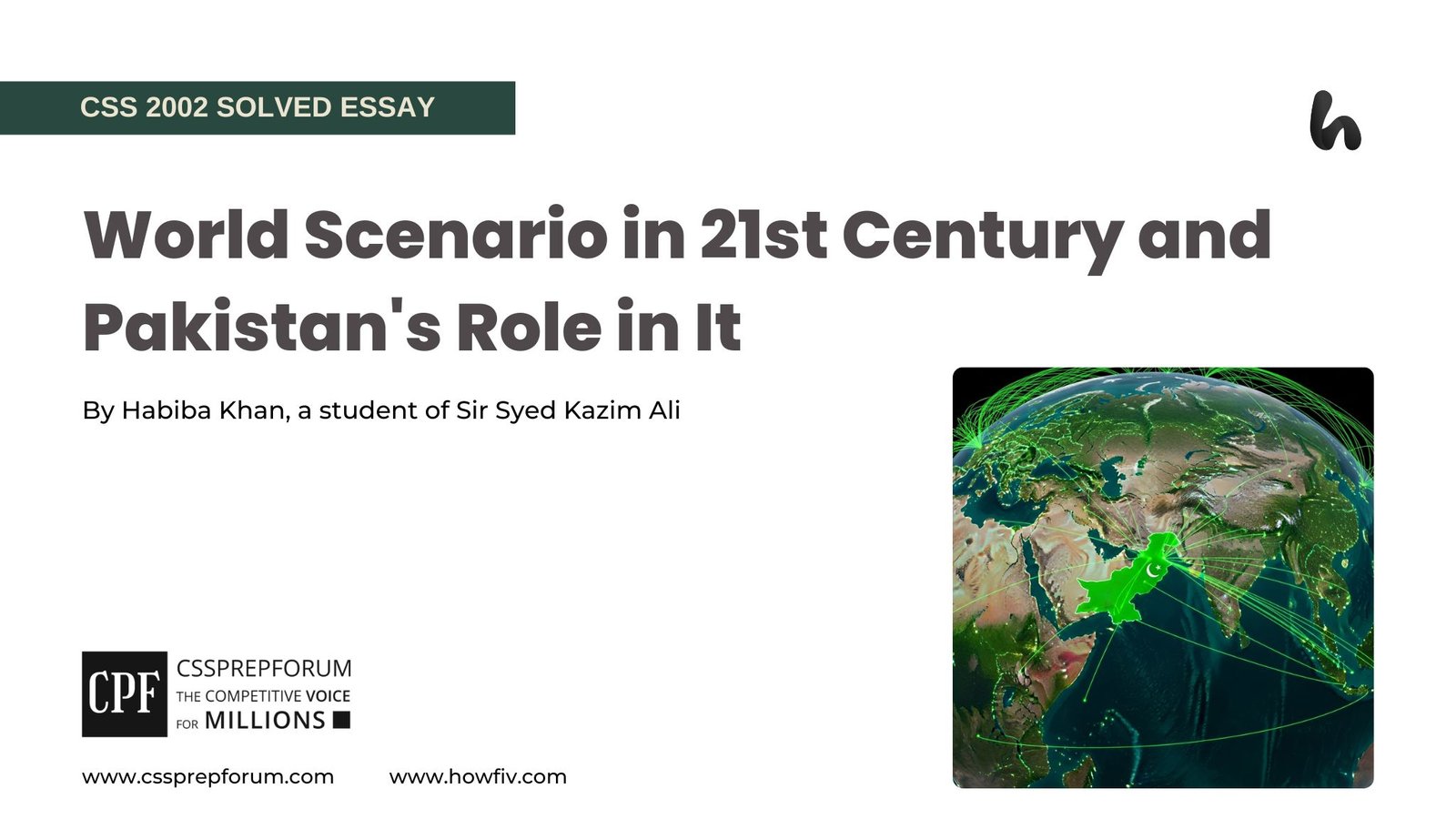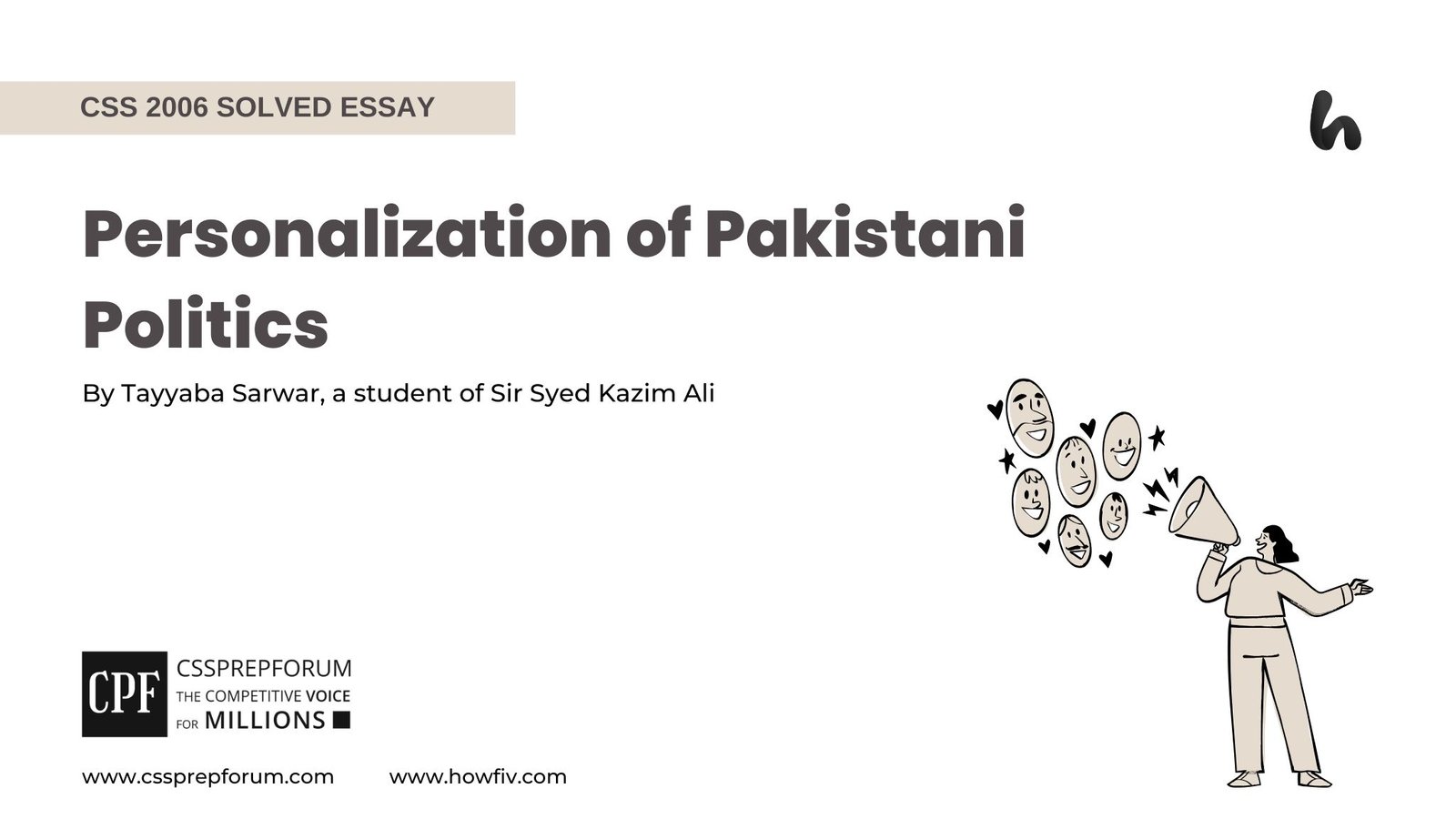PMS 2019 Solved Pakistan Affairs Past Papers | Partition of the Punjab in 1947 and Communal Harmony
The following question of PMS Pakistan Affairs 2021 is solved by Miss Iqra Ali, the best Pakistan Affairs Coach, on the guided pattern of Sir Syed Kazim Ali, which he taught to his students, scoring the highest marks in compulsory subjects for years. This solved past paper question is uploaded to help aspirants understand how to crack a topic or question, how to write relevantly, what coherence is, and how to include and connect ideas, opinions, and suggestions to score the maximum.

Question Breakdown
The question refers to the partition of Punjab that occurred in 1947 and its negative effects on communal harmony, which had been protected for centuries. Although the question mainly asks about the effect on communal harmony, it is crucial to initially give a contextual understanding of the Punjab Partition, the reasons behind the partition, and the method of its provision – by giving a map. Despite that, it does not matter whether the question relates to the past or present; it is always important to highlight initiatives taken by the government. Finally, end the article using a concluding paragraph.
Outline
1-Introduction
2-Historical Background on the Partition of Punjab in 1947
3- Overview of the Processes of the Partition
4- Factors behind the Partition of Punjab
- ✓ Economic interdependence and cultural exchanges
- ✓ Role of political parties
- ✓ Polarization of communities
5- Effects of the Partition of Punjab on the Communal Harmony
- ✓ Outbreak of violence and Revenge
- ✓ Displacement and migration
- ✓ Loss of trust among communities
- ✓ Impact on cultural and social fabric
- ✓ Destruction of Cultural Ties
6- Initiatives taken for Communal Harmony
- ✓ Government policies and integration efforts
- ✓ Role of civil society organizations in peace-building efforts
- ✓ Cultural exchanges
7- Conclusion

Answer to the Question
Introduction
Undoubtedly, communal harmony remains the main pillar of a state’s stability, as it brings different groups under a single umbrella, allowing mutual understanding, integrity, and solidarity to prevail in the long run. However, when the communal harmony in a state is harmed by the forces of sectarianism and extremism, it dies and is replaced with social chaos and polarization, ultimately eroding the foundation of unity. Similarly, before the very cause of Punjab Partition, the values of cultural, religious, and political integration had been undermined, which gradually destroyed the mutual respect and trust, leading to acts of violence among Muslims, Sikhs, and Hindus- grabbing the neck of one another. Behind the bustle, there had been factors, including economic interdependence and cultural exchanges, discord among political parties, and polarization among communities that challenged the co-existence of the communal harmony, leaving no way but to separate Punjab. As a result of the Punjab Partition, subversive outcomes in the form of displacement and migration of thousands, outbreak of violence and revenge, and destruction of cultural ties rose in the region. As a solution, initiatives such as the formation of new government policies and efforts for integration, establishment of organizations for peace-building, and cultural dialogues had been taken, which did not re-unite the separate ones but maintained social stability to some extent. To sum up, the article highlights the factors behind the Punjab partition and its effects on communal harmony.
Historical Background on the Partition of Punjab in 1947
Having an overview over the processes of the Partition, followed by the struggle for independence from British rule, the Partition of Punjab into two states- India and Pakistan- proved to be a complex and tumultuous process. It not only reshaped the geopolitical landscape of South Asia but also left deep scars on the collective memory of the region’s inhabitants. In the lead-up to Partition, factors marked by rising communal tensions between Hindus, Muslims, and Sikhs were exacerbated by the British policy of “divide and rule.” The idea to partition Punjab arose from the demand of the All-India Muslim League for a separate Muslim state, leading to the creation of Pakistan. Therefore, in March 1947, the British government proposed a plan to divide the province based on religious demographics, resulting in significant administrative and logistical challenges. As the decision was made, violence on a large scale erupted, with riots and communal clashes claiming thousands of lives and displacing millions, allowing people to flee their homes to join their respective religious communities. Moreover, communities that had coexisted for centuries turned against each other. Thus, the chaos reached its peak in August 1947, coming to a crescendo of the formal division of Punjab into Indian and Pakistani territories.
Overview of the Processes of the Partition of Punjab in 1946

- West Punjab: Predominantly Muslim areas were included in West Punjab, which became part of Pakistan, and Islamabad became its capital.
- East Punjab: Predominantly Hindu and Sikh areas became East Punjab, which was incorporated into India, and Delhi became its capital.
- The division was based on demographic patterns. Approximately 56% of the population of Punjab was Muslim, while Hindus and Sikhs made up around 44%.
- Lord Louis Mountbatten, the last Viceroy of India, provided a plan for the partition of British India into two independent states, India and Pakistan.
Factors behind the Partition of Punjab
Before jumping down to the main idea, it is crucial to understand the factors that allowed the idea of two-nations to emerge. The following paragraph highlights some of the most significant factors behind the partition of Punjab.
- Economic interdependence and cultural exchanges
Economically, Punjab was a hub of agrarian productivity and trade, with a shared reliance on resources such as wheat and cotton, which facilitated inter-community relationships. For instance, Hindus, Sikhs, and Muslims collaborated in agriculture and used to work side by side in fields and markets, creating a sense of mutual dependency. Culturally, the region was featured by a blend of different religious practices, languages, and festivals. For instance, Punjabi culture consisted of music and dance, whereas Sufi culture belonged to both Muslims, having respect and value for one other’s culture. However, as political tensions emerged, the bonds broke down and led to disrespect, undermining the values. Thus, as the economic ties that once connected these communities were severed, widespread violence and mass displacement occurred everywhere, highlighting how the very cultural and economic bond between both communities turned to hatred and animosity.
- Role of political parties
Politically, there was mistrust and chaos among political parties who allowed no alternative solution for peace to be implemented. For example, the Indian National Congress, advocating for a united India, found itself at odds with the All-India Muslim League, which was an advocator of the separate Muslim state, leading to communal tensions. The Congress’s unwillingness to accept Muslim demands for political representation and the Muslim League’s insistence on the Two-Nation Theory fostered Muslim identity and sought a way for separate land. Moreover, the advocate of Sikh, Akali Dal, also contributed his efforts for the sake of Sikhs’ interests, challenging the two grand political parties. Thus, owing to the obstinate and uncompromising political parties, the communal identity lost its fame, and the fight for religious identity rose, worsening sectarianism.
- Polarization of communities
Gradually, the political tussles among political parties have engraved their effects in small communities and civilians’ lives, making communal harmony a distant dream. People from none of the groups were ready to cooperate and collaborate with their opposite religious figures. In Muslim communities, the rights of Hindus were violated; on the other hand, the Hindu communities crossed every limit to leave remarks of oppression in the lives of Muslims. Therefore, such polarization among communities not only exacerbated the communal tensions but also hindered every possible way out for safe and sound living.
Effects of the Partition of Punjab on Communal Harmony
Moving to the main theme, there is no doubt that the partition of Punjab had deepened the scars of communal disharmony in societies. The given paragraph describes the adverse effects of the partition on communities.
- Outbreak of Violence and Revenge
The Partition of Punjab in 1947 posed adverse effects on communal harmony in the region. In the post partition, the arbitrary division of Punjab into India and Pakistan created a deeply polarized environment, where religious identities became the primary markers of allegiance and a wave of revenge shattered the fabric of society and given path to widespread outbreaks of violence. Moreover, the mass migration of populations along religious lines resulted in horrific communal riots, making Hindus, Sikhs, and Muslims turn against one another, fueled by mistrust, feelings of revenge, and historical grievances. Families were torn apart, and communities that had coexisted for centuries became deadly enemies. To conclude, as a result of the inept division of Punjab, the communities witnessed an intense outbreak of violence and revenge.
- Displacement and migration
Moreover, the partition of Punjab led to the displacement and migration of a huge population, resulting in thousands of casualties. As the borders were drawn, an estimated 10-15 million people fled from their homes, marking one of the largest mass migrations in human history. Hindus and Sikhs were forced to move from Pakistan’s territory to Indian territory, while Muslims moved in the opposite direction. In the middle, the majority who remained as a minority became prey to this violence and brutality, resulting in the deaths of hundreds of thousands. According to historian K.K. Aziz, the inflow of refugees strained resources and heightened communal tensions, as displaced populations often settled in areas that were already home to people of different religious backgrounds. To sum up, the partition had fled millions from their home and neighborhoods.
- Loss of trust among communities
Besides, more than a half of a century has passed, and the animosity, mistrust, and wounds remained still. Apart from the political turmoil in Pakistani and Indian politics, the citizens of both nations have bred hatred against each other. The mistrust among divisive religious communities and groups prevails yet, violation of minority rights in both countries, and verbal animosity between the citizens of both the nations are the result of inept division of Punjab in 1946-47. To conclude, loss of trust among societies and religious groups is taken as heredity of past chaos.
- Impact on cultural and social fabric
Moreover, the cultural and social harmony that coexisted for centuries in the India Sub-Continent were shattered and replaced with enmity, vengeance, and conflict. Not the decision of partition but the inappropriate method of partition and transfer of people to their respective regions in a brutal manner was wrong, which led to the grievances and loss of property and people. As a result, not only were the existing social structures dismantled, but a cultural homogenization also prevailed, where distinct traditions and practices began to wane in favor of more polarized religious identities. Thus, the inappropriate method of dividing the region of Punjab adversely affected the cultural and social fabric.
- ✔️ Destruction of Cultural Ties
Finally, cultural ties among Muslims, Hindus, and Sikhs had been given huge attention before the emergence of political turmoil. However, due to the unfair method of partition and the chaos before it, a wide gap had been drawn between the follower of these cultures, allowing them to violate cultural rights and untie their interpersonal bonding. For instance, festivals that were once celebrated collectively, such as Lohri and Baisakhi, became more segregated, with communities celebrating them within their own religious contexts rather than as a shared cultural celebration. To sum up, the cultural ties among different religious groups unravelled, adversely deepening the scars of communal disharmony.
Initiatives Taken for Communal Harmony
Followed by the partition of Punjab in 1947, both India and Pakistan faced the severe challenge of fostering communal harmony in the wake of widespread violence and displacement. In this regard, both governments took significant initiatives that are described as follows.
- Government policies and integration efforts
To begin, In India, the government resorted to policies that would rehabilitate and integrate refugees. Such policies included the establishment of the Punjab Refugee Rehabilitation and Resettlement Board in 1948 to provide aid and support to the displaced population. Additionally, Pakistan made initiatives like the “Communal Harmony Committee” to promote understanding and peace between different religious communities. Meanwhile, in Pakistan, the government resorted to measures for the integration of minorities and to promote a narrative of unity. According to the leader, Liaquat Ali Khan, “The ‘Minority Rights Commission’ was established to address the concerns of religious minorities and ensure their protection.” To conclude, despite intense challenges, significant initiatives made by both governments had brought relief to some extent.
- Role of civil society organizations and peace-building efforts
Besides, during this period, civil society organizations made significant efforts for peace-building. For instance, the All-India Peace Conference sought to promote dialogue and understanding between different religious communities. In Pakistan, organizations such as the Pakistan- Hindu Council advocated the rights of minority groups and facilitated mutual dialogue. Additionally, movements such as the “Hindu-Muslim Unity” campaigns aimed to rebuild trust and cooperation between communities torn apart by violence. As a result of these efforts, leaders from various religious groups were brought in to address the grievances and the communal challenges. Thus, the role of organizations established after the partition cannot be undermined in bringing different groups back again under one umbrella.
- Cultural exchanges
Last but not least, in order to bridge the gap between different groups, certain events for cultural exchanges were promoted. To exemplify, organizations such as the Punjab Lok Rahs (Punjab Folk Heritage) in Pakistan and various cultural institutions in India were organized for joint cultural festivals, music concerts, and art to regain communal harmony. Therefore, such efforts, while challenged by political tensions, underscored a collective yearning for peace and mutual respect among the people of India and Pakistan.
Conclusion
To summarize, the partition of Punjab in 1947 proved to be a tragic turning point that deeply affected communal harmony in the region. Historically, the economic interdependence and rich cultural exchanges were shattered by the violent polarization of communities, exacerbated by political figures. In the aftermath of such political turmoil, widespread violence and revenge were fueled, giving way to mass displacement and migration, further altering the demographics and social fabric of Punjab. Moreover, the loss of trust among communities fostered an environment of hatred and hostility, and diminished the cultural ties. Despite these challenges, efforts for communal harmony were made by governments; organizations were established to rebuild trust and promote peace. In short, the article veered around different factors behind the Punjab partition and its effects on communal harmony cussing some significant initiatives adopted by newborn nations.
CSS Solved Past Papers’ Essays
Looking for the last ten years of CSS and PMS Solved Essays and want to know how Sir Kazim’s students write and score the highest marks in the essays’ papers? Then, click on the CSS Solved Essays to start reading them.
CSS Solved Essays
CSS Solved General Science & Ability Past Papers
Want to read the last ten years’ General Science & Ability Solved Past Papers to learn how to attempt them and to score high? Let’s click on the link below to read them all freely. All past papers have been solved by Pakistan’s top CSS GSA coach having the highest score of their students.
General Science & Ability Solved Past Papers












